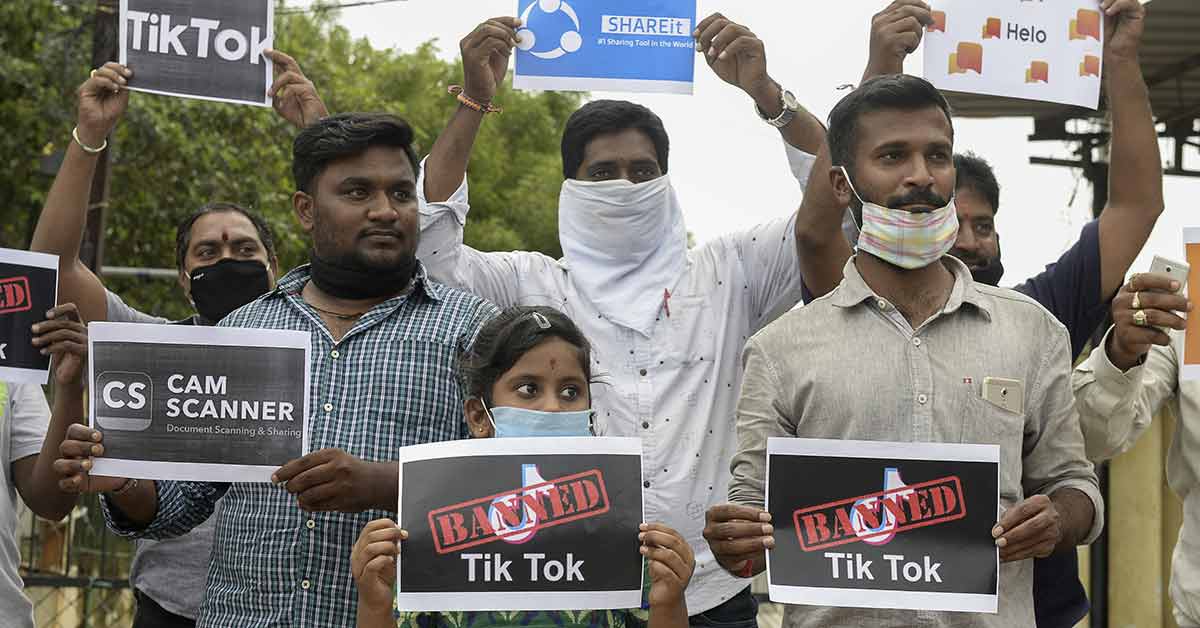In the wake of the coronavirus pandemic, India’s economy shrunk by 23.9 percent in the second quarter of 2020. This was a historic contraction, going down as the worst in the nation’s history. No other major economic power suffered as greatly during these past six months, and coming on the heels of 3.1 percent growth in the first quarter, it stings.
As if to add insult to injury, now China and India are facing increasing tensions along their Himalayan border. In June, 20 Indian soldiers were killed during a skirmish. It was referred to as hand-to-hand combat, but few details have emerged about what led to the incident.
Now, more soldiers from both sides have been deployed to the region and this is only going to exacerbate India’s economic hardships. United States (US) President Donald Trump recently commented about the issue when he said China and India were “going at it much more strongly than a lot of people even understand.”
The two nations recently had their respective defense ministers meet in Moscow for talks. It was the highest level of conversation they had since the incident began. However, the only public comments out of the meeting did not give much hope for terms of peace in the near future.
China’s Defense Minister Wei Fenghe reportedly told India’s defense minister that the issue is completely the fault and responsibility of India. Rajnath Singh, India’s Defense Minister merely sent out a tweet afterward that the meeting lasted a little more than two hours. However, he is also reported to have urged rapid disengagement in that region.
According to a US spokesperson, it appears as though neither nation has any desire to escalate the situation to war, but with India’s current economic challenges, it simply can’t afford to get dragged deeper into a violent conflict.
Even though both sides accused the other of violating its borders, claiming that troops from India and China crossed illegally, the increased tensions involve more than a border. India has recently banned a number of Chinese apps while also cutting down on foreign investment with the communist nation.
TikTok and WeChat, two highly popular apps (that are also potentially highly lucrative for China), along with about 100 other apps were banned by the emerging superpower. They also denied telecommunications equipment manufacturers Huawei and ZTE from exporting their products to the country.
On top of that, India has also increased screening processes and reduced potential investment as well as bidding on various public projects from countries that border India. This has caused an increasingly tense situation to grow even more critical in recent months.
Unfortunately, according to certain economic advisors, it’s unclear why India has taken these dramatic efforts as they believe this is only going to hamper its economic growth. India relies on imports from China for many products, including solar panels, manufacturing of drugs, and smartphones. In fact, according to the Nikkei Asian Review, 90 percent of its solar panels, 70 percent of smartphones, and 60 percent of the raw materials for drugs come from products sold to India by China.
Such imports are primarily productive assets, which, in turn, improve the economy’s prolificacy. Surely, a rift between the two major regional players would set India’s economy back, but civilians are evidently siding with Prime Minister Narendra Modi.
Nearly 97 percent of Indians who responded to a national survey claimed that they are personally boycotting products made in China. Modi appears to be placing increased pressure on India’s relationship with China because of public opinion.
However, according to history, Indians may be emotionally convinced on a certain issue, but when the economy suffers, they are known to change their minds quickly. Last autumn, India withdrew from nearly six years of talks about negotiating the Regional Comprehensive Economic Partnership (RCEP), which would have lowered tariffs among Asian trading partners. This could have led to a considerable increase in products pouring over the border from China.
According to data from the end of fiscal year 2019, India’s trade deficit was already topping out at US$161.8 billion, with nearly a third of that with China. China accounts for five percent of India’s exports and 14 percent of its imports, meaning they have an important relationship that, when under strain like it is now, will only create more economic hardships for India.
India is also concerned about national security threats from China but relies on them for economic growth and prosperity. Experiencing such a trade imbalance with China has put India on its proverbial heels, and with Modi taking dramatic steps in an effort to bring more balance, it has increased tensions.
As the novel coronavirus continues to spread and economies witness a decline, diplomatic tensions should be avoided. Both India and China need to make a concerted effort to reconcile. It appears that Rajnath Singh already understands this with his comment about withdrawing troops swiftly.
It is in both, India’s and China’s best interests to reconcile and focus on the economy. The pandemic has already hit India hard, and further escalation with China will only bring about further economic pain to India and its people.
Related Articles:

